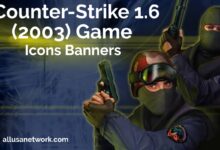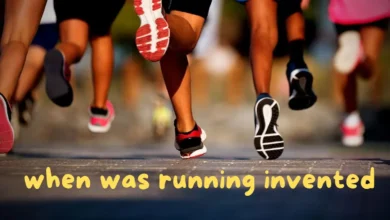Counter-Strike 1.6 (2003) Game Icons Banners

Counter-Strike 1.6, released in 2003, remains a monumental classic in the world of first-person shooter games. For many, the game signifies the golden age of online multiplayer experiences, with countless hours spent honing skills and forming clans. However, alongside its gameplay, a significant aspect of Counter-Strike 1.6 is its customizable aesthetic elements, such as game icons banners. These digital assets allowed players to express their individuality, promote their clans, or simply enhance their gaming experience. In this article, we will dive deep into the world of Counter-Strike 1.6 (2003) game icons banners, exploring their importance, design, and lasting influence in gaming culture.
The Importance of Game Icons Banners in Counter-Strike 1.6
In Counter-Strike 1.6, game icons banners were more than just decorative elements. They acted as a form of digital identity, helping players stand out from the crowd. Whether representing a player’s clan, their personal gaming style, or even just a preferred aesthetic, these graphics played a crucial role in defining the gaming experience.
Clan culture was a significant aspect of Counter-Strike 1.6, and each clan had its unique iconography. These banners often served as symbols of allegiance, showcasing group identity during matches. A well-designed banner could evoke pride and unity within a clan, while also intimidating opponents. In a competitive landscape, having strong visual branding was a powerful tool for standing out.
Apart from clans, individual players would also create and share custom game icons. These icons often replaced the default ones, adding a personal touch to the game. Whether through custom logos, memes, or abstract designs, icons became a way to express creativity within the limits of the game engine.
Read More: Sven Coop Game Icons and Banners: Elevating Your Gaming Experience
Designing Game Icons Banners: Tools and Techniques
Creating custom game icons banners for Counter-Strike 1.6 required a certain level of artistic skill and technical knowledge. At the time, many gamers turned to graphic design software like Adobe Photoshop or CorelDRAW to create their assets. Despite the relatively low resolution and small size of these icons banners, dedicated players spent hours perfecting their designs.
One of the most common techniques for designing banners involved layering images and text. Players often used fonts that reflected the gritty, action-packed atmosphere of Counter-Strike, such as bold, sharp-edged letters. Additionally, many icons banners incorporated imagery that reflected elements of the game itself, such as guns, bullets, or maps.
Transparency was also a key feature in creating game icons. In Counter-Strike 1.6, icons with transparent backgrounds were preferred since they blended seamlessly with the game’s interface. Tools like alpha channels were used to create these transparent elements, ensuring that the icons looked professional and clean.
For players without design experience, websites and online forums provided pre-made icons and banner templates. These resources allowed less artistically inclined players to customize their game experience without the need to create designs from scratch. The rise of fan communities around Counter-Strike 1.6 further fueled the sharing of these designs, resulting in a vast repository of user-generated content.
The Role of Clans in Promoting Icons Banners
The rise of clan culture in Counter-Strike 1.6 played a major role in the prominence of game icons banners. Clans, essentially groups of players who banded together to compete in matches, were the cornerstone of the multiplayer community. Each clan prided itself on its unique identity, often reflected in its banner.
Clans would often go to great lengths to design their banners and logos. These visual elements weren’t just for show—they were symbols of the clan’s values, strength, and history. The most respected clans often had highly recognizable banners, which could evoke fear or respect from opponents. For example, top-tier clans often commissioned professional artists or graphic designers to create sleek, memorable banners.
Additionally, clan members would often use custom game icons in tandem with their banners. These icons helped to unify the team visually, giving them a more cohesive appearance during matches. In competitive play, visual branding was often as important as gameplay, and clans that invested in their branding could gain a psychological edge over their rivals.
Sharing and Distributing Game Icons Banners
In the early 2000s, the internet was rapidly expanding, and fan communities dedicated to Counter-Strike 1.6 were flourishing. Forums like the Steam Community, GameBanana, and clan-specific websites became hubs for sharing and distributing custom game icons banners.
Players from around the world would upload their designs to these platforms, allowing others to download and use them in their own games. Often, these shared icons banners were open-source, meaning anyone could modify them to suit their needs. This culture of sharing led to a diverse range of creative expressions, with some players even gaining popularity within the community for their design skills.
Many players who lacked graphic design skills would browse these forums to find the perfect icon or banner. The wide range of available assets meant that no two players had to use the same designs, allowing for a high level of personalization. Moreover, the ability to download and modify these designs meant that even the most artistically challenged players could enjoy a degree of customization.
The Technical Limitations of Counter-Strike 1.6 and How They Shaped Icon and Banner Design
Counter-Strike 1.6 was built on the GoldSrc engine, a modified version of the Quake engine. While revolutionary for its time, the engine had certain technical limitations, especially in terms of graphical fidelity. These limitations had a direct impact on the design of game icons banners.
For one, the resolution of in-game graphics was relatively low. This meant that icons banners had to be designed with simplicity in mind. Overly complex designs would often appear pixelated or unclear when viewed in the game. As a result, many designers focused on bold, clean lines and high contrast colors to ensure that their designs were legible even at small sizes.
Additionally, file size was a concern for many players, as large images could cause the game to lag or load slowly. This encouraged designers to optimize their images by keeping file sizes as small as possible. Compression techniques were often employed to strike a balance between image quality and performance.
Despite these limitations, many players embraced the challenge of creating effective designs within the constraints of the game. The technical restrictions fostered a sense of creativity, as designers had to find innovative ways to express themselves with limited resources.
Evolution of Game Icons Banners Beyond Counter-Strike 1.6
As gaming technology evolved, so too did the design and use of game icons banners. With the release of later versions of Counter-Strike, such as Counter-Strike: Source and Counter-Strike: Global Offensive, the graphical capabilities of the game engines improved dramatically. This allowed for more detailed and complex designs.
However, many players still fondly remember the simplicity and charm of Counter-Strike 1.6’s game icons banners. The limitations of the GoldSrc engine gave these designs a distinct, pixelated aesthetic that has become iconic in its own right. For many, these early designs are a nostalgic reminder of the game’s early days.
Today, Counter-Strike 1.6 remains a beloved classic, and its community continues to thrive. Even though modern versions of the game have taken over in terms of player count, many gamers still return to 1.6 for its gameplay—and for the nostalgia associated with its iconic visuals.
The Legacy of Counter-Strike 1.6 in Customization Culture
Counter-Strike 1.6 is more than just a game; it’s a cultural landmark that helped shape online gaming. The customizable elements, particularly the game icons banners, played a huge role in this. They allowed players to personalize their experience, form communities, and express themselves creatively.
The legacy of these design elements can still be seen in modern gaming. Many contemporary games allow for customization, and Counter-Strike 1.6 helped lay the foundation for this trend. The sense of ownership and identity that comes from creating a custom icon or banner is something that continues to resonate with gamers today.
Read More: Halo (2003) Game Icons Banners: Classic Designs for Fans
Conclusion: Why Game Icons Banners Matter
At first glance, game icons banners in Counter-Strike 1.6 may seem like minor, purely aesthetic elements. However, their importance cannot be understated. These visual assets allowed players to express themselves, represent their clans, and enhance their gaming experience.
From their technical limitations to the creative communities that sprang up around them, game icons banners played a significant role in the history of Counter-Strike 1.6. As we look back on this legendary game, it’s clear that these design elements helped shape the culture of gaming, and their legacy continues to influence modern games today.





